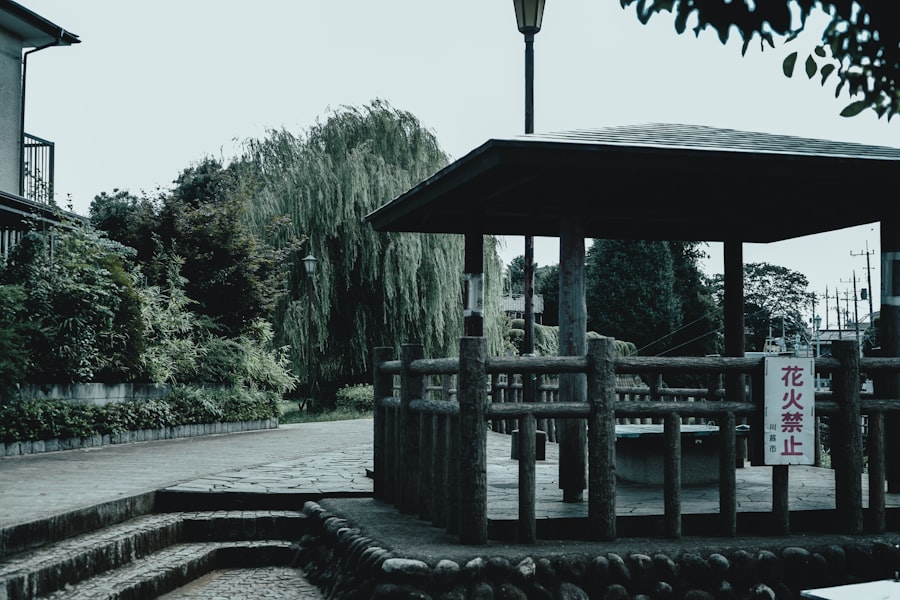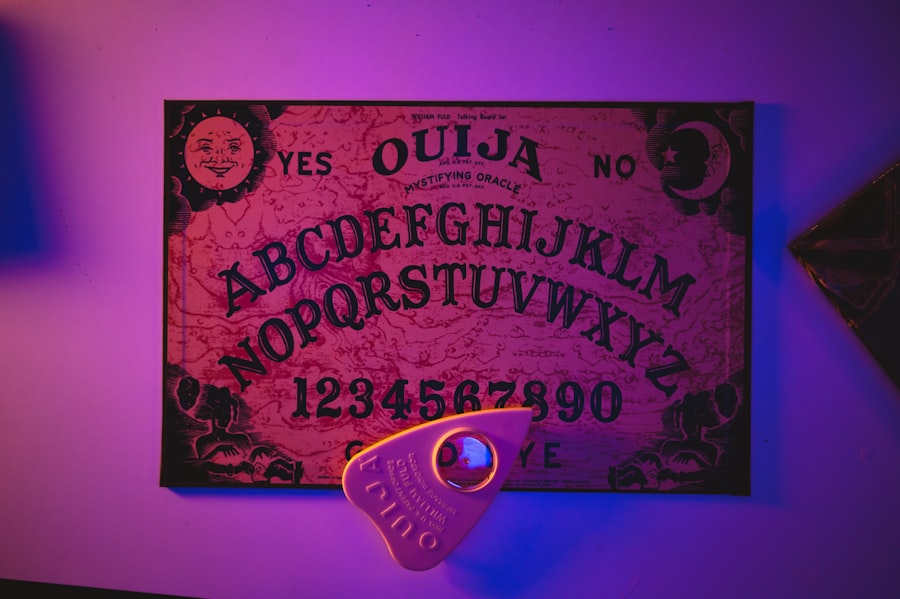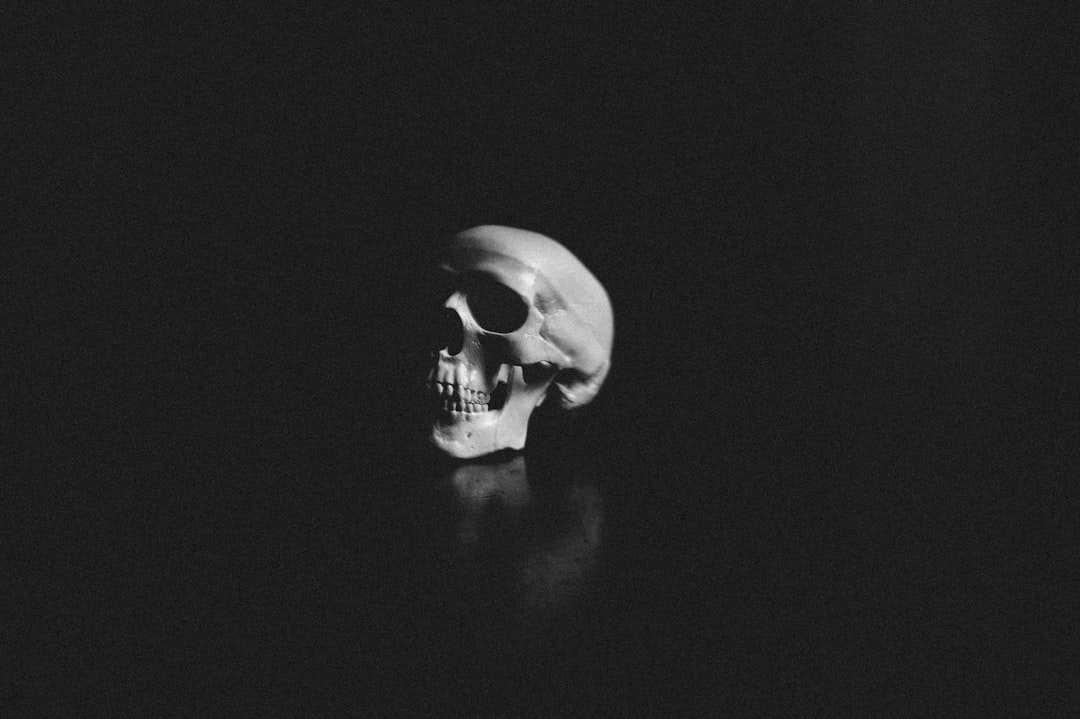Every house has a story, and the history of a particular residence can often be as intriguing as the lives lived within its walls. When you step into an old house, you might feel the weight of its past pressing down on you, whispering tales of joy, sorrow, and everything in between. The history of the house you are exploring may be steeped in local lore, with previous occupants leaving behind echoes of their existence.
Perhaps it was built during a significant historical period, or maybe it has been the site of notable events that shaped the community around it. Understanding this history can provide context for the strange occurrences that may later unfold. As you delve deeper into the house’s past, you may uncover stories of families who thrived there, only to be followed by tales of tragedy and loss.
Each room could hold memories of laughter and love, but also of heartache and despair. The architecture itself might tell a story, with its design reflecting the era in which it was built. You might find remnants of past lives in the form of old photographs, letters, or even furniture left behind.
These artifacts can serve as a bridge to the past, allowing you to connect with those who once called this place home. The history of the house is not just a timeline; it is a tapestry woven from the lives that have intersected within its walls.
Key Takeaways
- The history of the house reveals a long and complex past, often involving tragic events and untimely deaths.
- Strange occurrences and phenomena in haunted houses include unexplained noises, apparitions, and objects moving on their own.
- Investigating paranormal activity involves using tools such as EMF meters, EVP recorders, and infrared cameras to capture evidence.
- The role of perception in haunting suggests that individuals’ beliefs and expectations can influence their experiences in a haunted house.
- Scientific explanations for haunted house phenomena include infrasound, electromagnetic fields, and environmental factors that can create a sense of unease and fear.
Strange Occurrences and Phenomena
As you settle into the house, you may begin to notice strange occurrences that defy explanation.
These phenomena can evoke a sense of unease, making you question whether you are truly alone.
Shadows may flit across your peripheral vision, and cold drafts might sweep through rooms without any apparent source. Such experiences can be unsettling, leading you to wonder if the house is inhabited by spirits or if there is a more rational explanation for these occurrences. You might find yourself drawn to investigate further, seeking out others who have experienced similar phenomena.
Stories of flickering lights, disembodied voices, or objects moving without cause can create a shared sense of intrigue and fear. As you gather accounts from friends or family members who have spent time in the house, you may discover that these strange occurrences are not isolated incidents but part of a larger narrative that has unfolded over time. The atmosphere thickens with mystery, and your curiosity deepens as you ponder the possibility that something otherworldly may be at play.
Investigating Paranormal Activity

If you are intrigued by the strange happenings in the house, you might feel compelled to investigate further. Armed with curiosity and perhaps a few tools—like a flashlight, a notebook, or even a digital recorder—you set out to document your experiences. You may choose to conduct your own investigations during quiet hours when the house is still, hoping to capture evidence of paranormal activity.
This process can be both thrilling and nerve-wracking as you navigate the fine line between skepticism and belief. You may also consider reaching out to paranormal investigators who specialize in exploring haunted locations. These experts often come equipped with advanced technology designed to detect anomalies such as electromagnetic fields or temperature fluctuations.
They may use tools like EVP (Electronic Voice Phenomena) recorders to capture sounds that are inaudible to the human ear or infrared cameras to document unexplained movements. Engaging with these professionals can provide you with insights into the phenomena you’ve experienced and help you understand whether there is a rational explanation behind them.
The Role of Perception in Haunting
| Perception Factor | Impact on Haunting |
|---|---|
| Belief in the Supernatural | Can influence the perception of hauntings and contribute to the belief in paranormal activity. |
| Emotional State | Strong emotions such as fear or anxiety can heighten perception of hauntings. |
| Cultural Influence | Cultural beliefs and traditions can shape perception of hauntings and supernatural phenomena. |
| Personal Experience | Previous encounters with hauntings can impact perception and belief in paranormal activity. |
Your perception plays a crucial role in how you interpret the events unfolding around you in the house. The mind is a powerful entity, capable of creating vivid images and sensations based on your beliefs and expectations. If you enter the house with an open mind and a willingness to believe in the supernatural, your experiences may be colored by that perspective.
Conversely, if you approach the situation with skepticism, you might dismiss strange occurrences as mere coincidences or figments of your imagination. The psychological aspect of perception can lead to what is known as pareidolia—the tendency to see familiar patterns or shapes in random stimuli. In dimly lit rooms or shadowy corners, your mind may conjure images of figures or faces where none exist.
This phenomenon can heighten your sense of fear and anticipation, making every creak of the floorboards feel like a harbinger of something sinister. Understanding how perception influences your experience can help you navigate your feelings about the house and its potential hauntings.
Scientific Explanations for Haunted House Phenomena
While tales of ghosts and spirits are captivating, science often provides alternative explanations for what might be perceived as paranormal activity. For instance, infrasound—sound waves below the range of human hearing—can cause feelings of unease or anxiety. These low-frequency sounds can be generated by natural phenomena such as wind or seismic activity, leading to sensations that some might interpret as ghostly presences.
Additionally, environmental factors such as mold or carbon monoxide can contribute to feelings of disorientation or hallucinations. If you’re experiencing strange occurrences in the house, it may be worth considering whether these scientific explanations could account for what you’re witnessing. By approaching the situation with an open mind and a willingness to explore both supernatural and scientific perspectives, you can gain a more comprehensive understanding of your experiences.
The Influence of Belief and Culture

Belief systems and cultural backgrounds significantly shape how individuals perceive hauntings and paranormal phenomena. In some cultures, spirits are seen as protectors or guides, while in others, they may be viewed as malevolent forces. Your own beliefs about life after death and the existence of spirits will influence how you interpret your experiences in the house.
If you come from a culture that embraces spiritualism or folklore surrounding ghosts, you may be more inclined to accept the idea that the house is haunted. Moreover, cultural narratives surrounding hauntings often inform how people react to strange occurrences. In some communities, ghost stories are passed down through generations, creating a shared understanding of what it means to encounter the supernatural.
As you navigate your experiences in the house, consider how your cultural background shapes your perceptions and reactions. This awareness can deepen your understanding of both yourself and the phenomena occurring around you.
Understanding the Psychology of Fear
Fear is an intrinsic part of the human experience, often heightened in environments that evoke uncertainty or mystery. In a house where strange occurrences take place, fear can manifest in various ways—ranging from mild unease to outright terror. Understanding the psychology behind fear can help you navigate your emotions as you confront the unknown.
Your brain’s response to fear is deeply rooted in survival instincts; it triggers a fight-or-flight response that prepares you to react to perceived threats. In an unfamiliar environment like an old house filled with strange noises and shadows, this instinct can become amplified. You may find yourself hyper-aware of every creak and rustle, interpreting them as potential dangers rather than benign sounds.
By recognizing this psychological response, you can work to manage your fear and approach your experiences with a more balanced perspective.
The Impact of Environmental Factors
Environmental factors play a significant role in shaping your experiences within a haunted house. Elements such as temperature fluctuations, humidity levels, and even lighting can influence how you perceive your surroundings. For instance, sudden drops in temperature might lead you to believe that a spirit is present; however, these changes could also be attributed to drafts or poor insulation.
Additionally, atmospheric conditions like barometric pressure can affect how sound travels within a space. You might hear whispers or footsteps more clearly during certain weather conditions than others. By paying attention to these environmental factors, you can gain insights into how they contribute to your experiences in the house.
This awareness allows you to differentiate between genuine paranormal activity and natural phenomena that could explain what you’re witnessing.
The Role of Electromagnetic Fields
Electromagnetic fields (EMFs) have garnered attention in discussions about paranormal activity due to their potential effects on human perception and behavior. Some researchers suggest that exposure to high levels of EMFs can lead to feelings of anxiety or unease—sensations often associated with hauntings. If you’re experiencing strange occurrences in the house, it may be worth investigating whether there are sources of EMFs nearby.
Devices designed to measure EMFs are commonly used by paranormal investigators seeking evidence of ghostly presences. While some argue that fluctuations in EMF readings correlate with reported paranormal activity, others remain skeptical about drawing direct connections between EMFs and hauntings. Regardless of where you stand on this debate, understanding the role EMFs play in shaping human experiences can provide valuable context for your own encounters within the house.
Exploring the Possibility of Hoaxes and Misinterpretations
As you navigate your experiences in the house, it’s essential to consider the possibility of hoaxes or misinterpretations influencing what you’re witnessing. In some cases, individuals may intentionally create illusions or fabricate stories for attention or entertainment purposes. This reality can complicate your understanding of what is genuinely occurring within the space.
Moreover, misinterpretations stemming from heightened emotions or suggestibility can lead individuals to perceive ordinary events as extraordinary. A simple draft might be interpreted as a ghostly presence if you’re already primed to believe in hauntings due to local lore or personal experiences. By maintaining a critical mindset while remaining open to possibilities, you can better discern between genuine phenomena and those influenced by external factors.
Seeking Professional Help and Guidance
If your experiences in the house become overwhelming or distressing, seeking professional help may be beneficial. Paranormal investigators often offer services designed to help individuals understand their experiences better while providing support during unsettling times.
Additionally, mental health professionals can assist if fear or anxiety related to paranormal experiences begins to impact your daily life significantly. They can provide coping strategies and tools for managing fear while helping you explore any underlying issues contributing to your emotional responses. Ultimately, seeking guidance from professionals allows you to approach your experiences with greater clarity and support as you navigate this complex landscape between reality and belief.
In conclusion, exploring a haunted house involves delving into its rich history while grappling with strange occurrences that challenge your perceptions and beliefs. By investigating these phenomena through various lenses—scientific explanations, cultural influences, psychological responses—you can gain a deeper understanding of both yourself and the mysteries surrounding the space. Whether you’re drawn by curiosity or fear, embracing this journey allows for personal growth as you confront what lies beyond the veil of everyday reality.
If you’re pondering the question, “Is my house haunted or is it science?” you might find it intriguing to explore the intersection of the supernatural and scientific explanations. A related article that delves into this topic can be found on Freaky Science, where they explore various phenomena that are often attributed to hauntings but may have scientific explanations. For more insights, you can check out their article by visiting Freaky Science. This resource provides a fascinating look at how science can sometimes demystify what we perceive as paranormal activity.
WATCH THIS! 🧠 The Brain Hack That Makes You See Ghosts!
FAQs
What are some common signs that a house may be haunted?
Some common signs that a house may be haunted include unexplained noises, strange odors, objects moving on their own, and feelings of being watched or touched.
What are some scientific explanations for these supposed haunted occurrences?
Scientific explanations for supposed haunted occurrences include natural phenomena such as drafts causing noises, faulty wiring causing electrical disturbances, and psychological factors such as suggestibility and the power of suggestion.
What are some steps to take to determine if a house is actually haunted or if there are scientific explanations for the occurrences?
Some steps to take to determine if a house is actually haunted or if there are scientific explanations for the occurrences include conducting a thorough investigation, ruling out any natural or man-made causes for the phenomena, and seeking the help of professionals such as electricians, plumbers, and psychologists.
What are some resources for further information on the topic of haunted houses and scientific explanations?
Some resources for further information on the topic of haunted houses and scientific explanations include books, articles, and websites that cover paranormal investigations, psychology, and the natural sciences. It is important to seek information from reputable sources and experts in the field.
